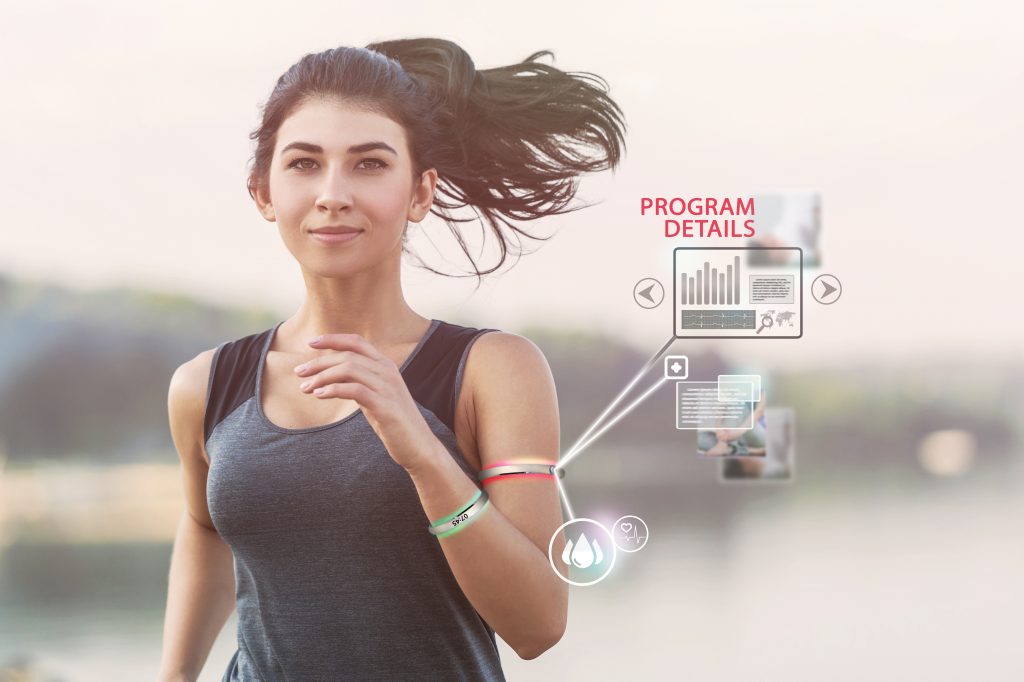Wearables are an example of product and service businesses coming together in a way that aligns perfectly with the concept of the platform economy. In this signal blog post we discuss the wearable markets and envision its future potential when embracing the fast-paced developments in technology, data analytics innovations and business models.

What’s up with wearables?
Wearable technology, or simply wearables, are yet another application domain, where the opportunities of the platform economy are immense. These smart electronic devices incorporated into clothing or worn on the body as implants or accessories have potential to not only provide entertainment or infotainment but even ground-breaking solutions for aging, wellbeing, healthcare, emergency management, safety, housekeeping, etc. Wearables can in fact be the connector that allows data on an individual, such as location, activity, mood or vital functions, to be integrated into other data reserves in a smart and useful way, for example to help find a route to a destination, track exercise intensity, provide feedback to improve mood or give personalised tips for nutrition or health.
For the time being the most widespread wearables are smartwatch type activity and fitness trackers, such as those by the wristband market giant and pioneer Fitbit or the Finnish smart ring design award winner Oura. Suchlike devices usually track, among others, steps, calories consumed, heartbeat and hours slept. But we’re bound to see more as the following three take place: (1) More sophisticated sensors and tracking technologies are being introduced into wearables. (2) The range of wearables will diversify from wristbands (and smartphones) towards IoT-connected smart clothing, implants, etc. (3) Abundant data alongside with innovative thinking will allow unimaginable new ideas to turn into products and services.
New technologies are being embedded in wearables
One example of recent developments is how contactless payments have become a part of the wristband functionalities, such as Fitbit Pay. Another welcome novelty is featured in Matrix Powerwatch, a smartwatch that converts body heat into energy to power itself, so that you never need to charge it.
From the health care perspective, an interesting innovation is non-invasive glucose monitoring with a smartwatch. When mature and accurate enough, this technology embedded into everyday wearables could make a big difference for diabetics. Apple has announced interest in developing a solution, but the forerunner in applying the technology is HealBe, although they use it in their GoBe device for the time being only to measure calorie intake. In fact, this is also one of the first non-manual food intake tracker in the wearables business.
A complementary example is how AI has been trained to detect diabetes with nearly 85 percent accuracy by simply looking at heart beat over time. So in fact, even with the sensor technologies of current wearables, pre-screening of diabetes could already be a part of the data analytics.
Cross-pollination of data means new services and new business logics
The full potential of what the platform economy has to offer with wearables can be realised when multiple data sources are brought together. By this we mean data collected by one wearable device as well dynamic data from other wearables, other gadgets and basically any other data collecting objects. Equally important are the more static datasets, information reserves and knowledgebases that provide further context to analyse and process data captured by wearables. For example, imagine wearing a smartwatch that has been measuring your activity and food intake through the day. This data collected by your wearable could be compared against nutritional recommendations as well as reflected upon the ingredients available in your smart fridge. Combining all this data, a recommendation to fix a protein-packed omelette in the evening could be provided by your smart watch. Of course, there are also great risks with increasing data flows and interfaces, so attention needs to be paid to ensure for example reliability, safety and privacy.
In the current market setting we can see multi-sided platform business emerging around wearables. Wearable manufacturers are growingly willing to let third-party app developers to interface with the data their device collects instead of relying solely on their own software. This allows room for services to grow and improve. For example, an Indian online fashion store Myntra has built a software platform for wearable devices not only for its own line of products but also for those developed by third-party device makers. The core idea of the Myntra Wearable Platform is, well in line with platform thinking, to allow device manufacturers to integrate their wearables to talk to one another as well as to encourage external app developers to make use of the data.
The development of the wearable market and the service business around it means also new flavours in business models. One categorisation of strategies lists (1) product model, focusing on device sales, including product and service, (2) subscription model, focusing on as-a-service approach and recurring fees, (3) cross-selling model, focusing on selling allied products after device purchase and (4) data-sharing model, combining physical product sale with additional information products. The platform economy can accommodate all four business models, but the most fruitful outcomes for the consumer would probably emerge with the openness and multi-sided market opportunities enabled by the data-sharing approach.
Selected articles and websites
Cerillion: Business Models for Wearables in the IoT Economy
Engadget, Velazco: Data from wearables helped teach an AI to spot signs of diabetes
Engadget: Healbe’s GoBe 2 calorie tracker teases the future of wearables
ETtech: Myntra debuts a wearable platform along with its first wearable product Blink Go
European Commission: Smart Wearables: Reflection and Orientation Paper
Fitbit Official Site for Activity Trackers
Fitbit Pay
Gadgets & Wareables: Review Healbe GoBe 2: putting the automatic calorie-tracker to the test
Healbe GoBe Automatic Body Manager
Matrix PowerWatch
Oura Ring
The Conversation: Turning your health data into a “wellness score” might not be good for you
Wikipedia: Wearable technology
